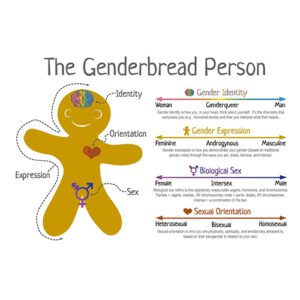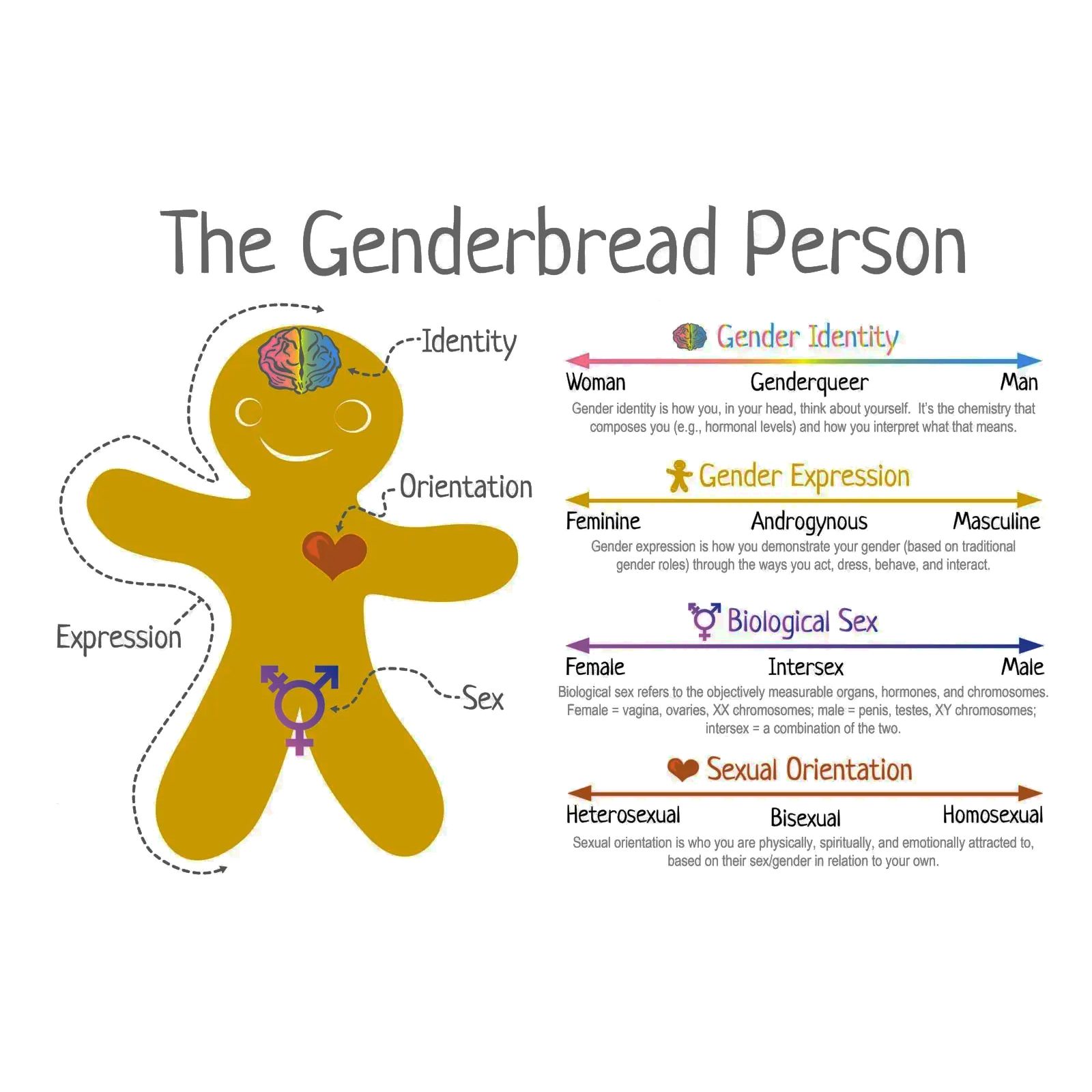
Gender has two components:
- Gender identity – a person’s basic internal sense of being a man, woman, and/or another gender (e.g., gender queer, gender fluid).
- Gender expression – conveyed through appearance (e.g., clothing, make up, physical features), behaviors, and personality styles. These means of expression are often culturally defined as masculine or feminine. The ways in which people express their gender identity are both particular to each individual and variable across cultures.
Sex is often described as a biological construct defined on an anatomical, hormonal, or genetic basis. In the U.S., individuals are assigned a sex at birth based on external genitalia.
Sexual orientation relates both to the types of partners to whom an individual is romantically and/or sexually attracted and also to how one identifies in this regard (e.g., straight, gay, lesbian, bisexual). Sexual orientation and gender identity are distinct constructs. A transgender individual may identify as straight, gay, lesbian, bisexual, or some other sexual orientation entirely.
Brought to you by https://www.psychiatry.org


